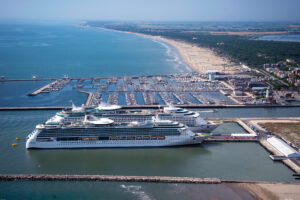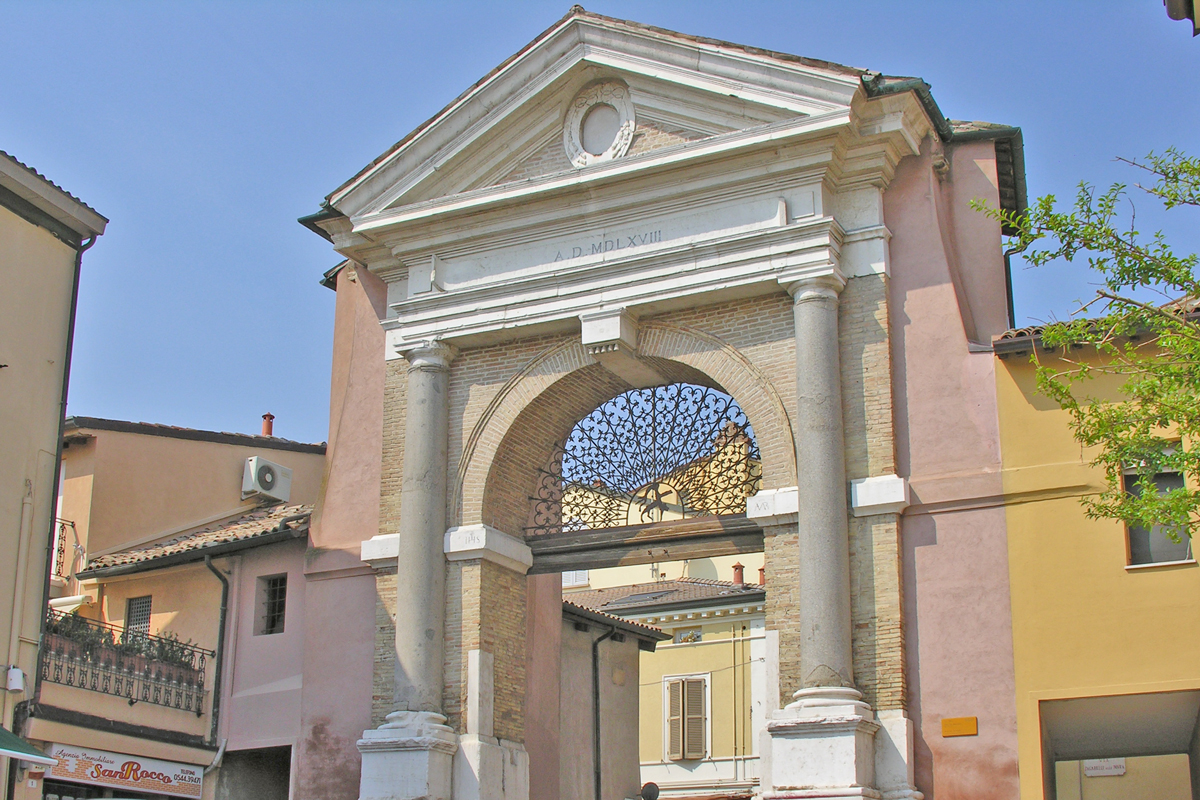PORTA SISI is located on the southern border of the historical centre of Ravenna, at the end of the elegant Via Mazzini.
Squeezed between other old buildings, the gate appears almost as a portico on Borgo San Rocco (see focus), while together with Porta Adriana, it has been one of the main entrances to the city over the past centuries.
Of its two names, Porta Ursicinis and Porta Sisi, one is perhaps a diminutive of the other. The gate seems to have been called Usisina, Sisina, Sisna, Sicina, in honour of Ursicino, a saint of Ligurian origin martyred in Ravenna in 66 AD. In 1600, the name Sisi finally appeared.
Mentioned for the first time in a document from the 10th century (960 AD), it may be even older, as the route along which the modern Via Mazzini runs dates back to Roman times.
Curiously, a 13-century municipal statute prohibits “prostitutes and pimps from standing in the public street, especially in the vicinity of Porta Ursicina and Porta Anastasia”.
In the Middle Ages, the gate also had a tower, which was probably demolished in the 16th century, as it was no longer mentioned in documents after that date.
Its present form is connected to the works of 1568, when it was rebuilt and adorned with two beautiful granite columns with Doric capitals, supporting the pediment on which the date of the works is still engraved. In addition, it still has the two low passages that were used for transit without horses.
In the vault is a wrought iron lunette from the main door of the monastery of San Vitale, placed here in 1885. At its centre there is a depiction, presumably of Saint Vitalis, although the image is now almost unrecognisable due to weather erosion.








